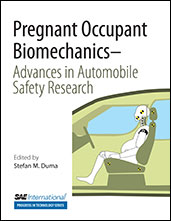2013-11-11
PMHS Impact Response in 3 m/s and 8 m/s Nearside Impacts with Abdomen Offset 2013-22-0015
Lateral impact tests were performed using seven male post-mortem human subjects (PMHS) to characterize the force-deflection response of contacted body regions, including the lower abdomen. All tests were performed using a dual-sled, side-impact test facility. A segmented impactor was mounted on a sled that was pneumatically accelerated into a second, initially stationary sled on which a subject was seated facing perpendicular to the direction of impact. Positions of impactor segments were adjusted for each subject so that forces applied to different anatomic regions, including thorax, abdomen, greater trochanter, iliac wing, and thigh, could be independently measured on each PMHS. The impactor contact surfaces were located in the same vertical plane, except that the abdomen plate was offset 5.1 cm towards the subject. The masses of the sleds and the force-deflection characteristics of the energy-absorbing interface material between the sleds were set to provide the impactor sled with a velocity profile that matched the average driver door velocity history produced in a series of side NCAP tests. Impactor padding was also selected so that average ATD pelvis and thorax responses from the same series of side NCAP tests were reproduced when the ATD used in these tests was impacted using the average door-velocity history. Each subject was first impacted on one side of the body using an initial impactor speed of 3 m/s. If a post-test CT scan and strain-gage data revealed two or fewer non-displaced rib fractures, then the PMHS was impacted on the contralateral side of the body at a speed of 8 m/s or 10 m/s.
The results of tests in the 3 m/s and 8 m/s conditions were used to develop force-deflection response corridors for the abdomen, force history response corridors for the pelvis (iliac wing and greater trochanter), the midthigh, and the thorax. Response corridors for the lateral acceleration of the pelvis were also developed. Future work will compare side impact ATD responses to these response corridors.
SAE MOBILUS
Subscribers can view annotate, and download all of SAE's content. Learn More »

BOOK
Pregnant Occupant Biomechanics
